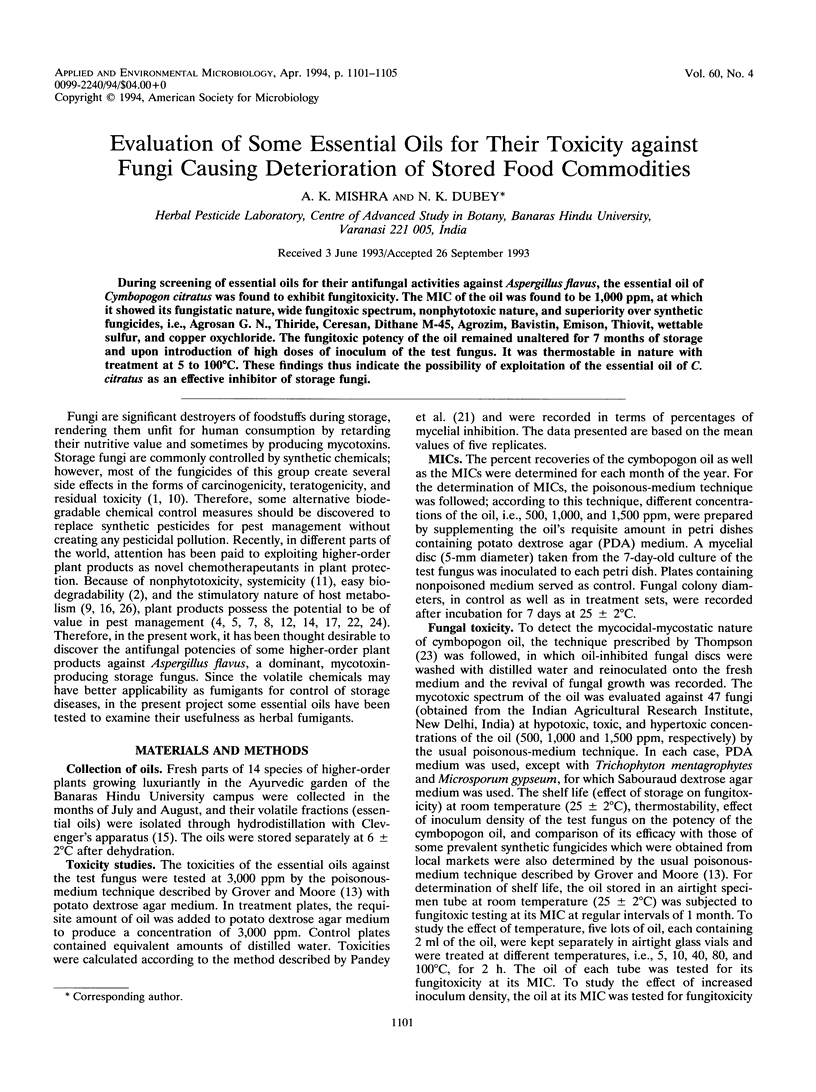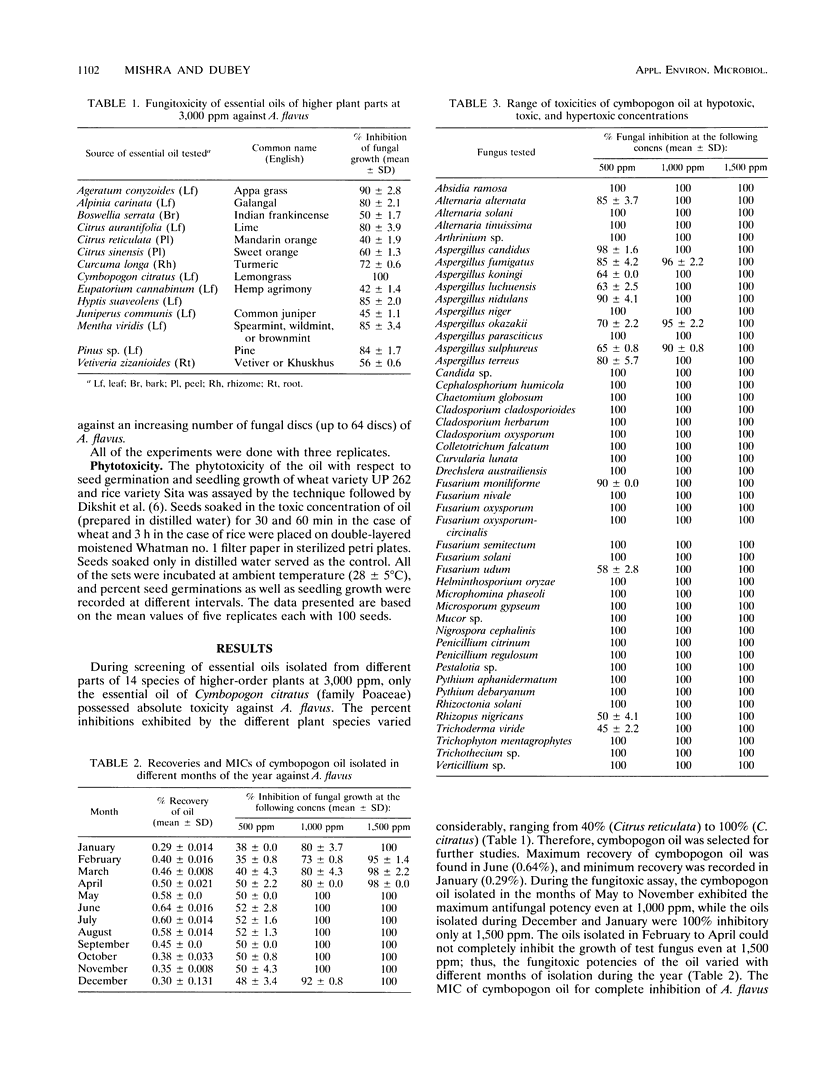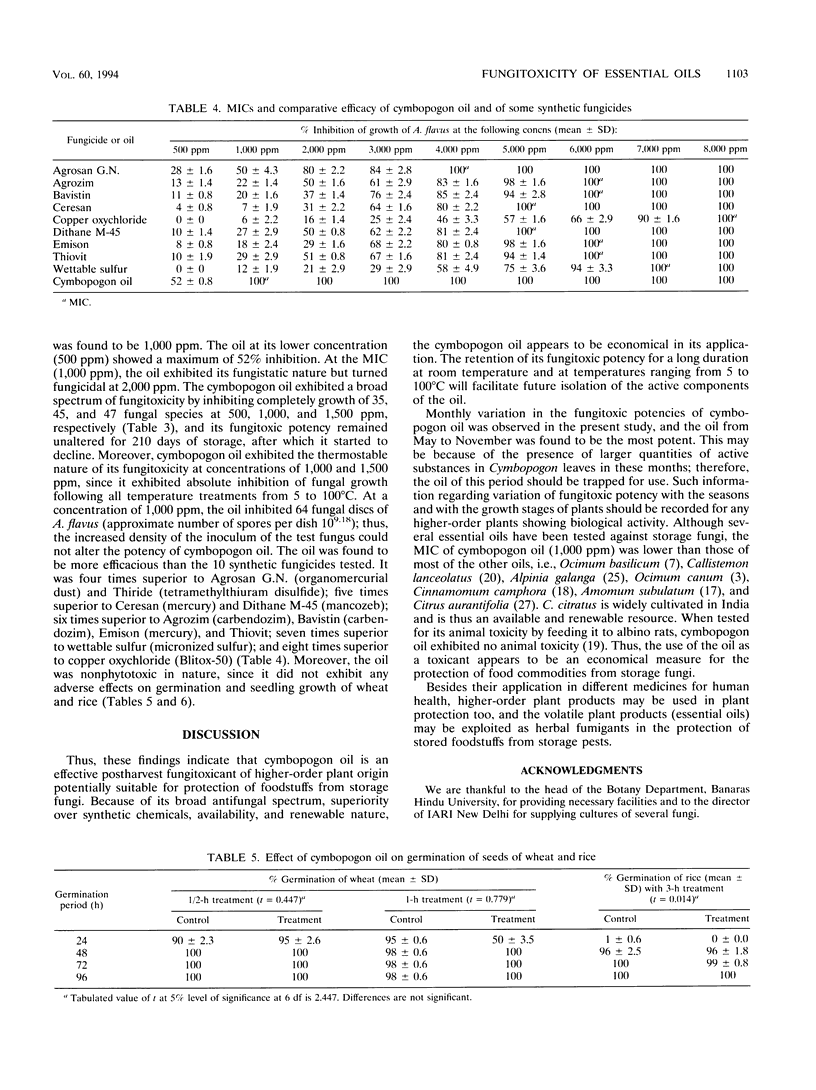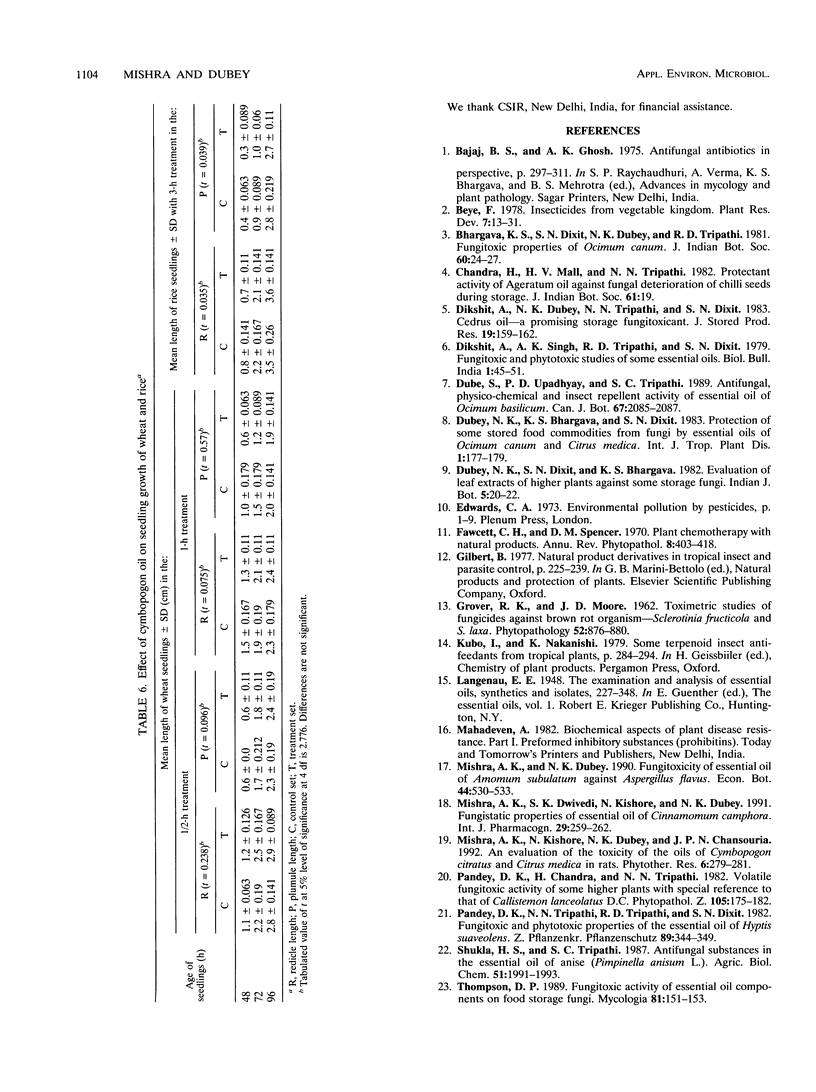Abstract
During screening of essential oils for their antifungal activities against Aspergillus flavus, the essential oil of Cymbopogon citratus was found to exhibit fungitoxicity. The MIC of the oil was found to be 1,000 ppm, at which it showed its fungistatic nature, wide fungitoxic spectrum, nonphytotoxic nature, and superiority over synthetic fungicides, i.e., Agrosan G. N., Thiride, Ceresan, Dithane M-45, Agrozim, Bavistin, Emison, Thiovit, wettable sulfur, and copper oxychloride. The fungitoxic potency of the oil remained unaltered for 7 months of storage and upon introduction of high doses of inoculum of the test fungus. It was thermostable in nature with treatment at 5 to 100 degrees C. These findings thus indicate the possibility of exploitation of the essential oil of C. citratus as an effective inhibitor of storage fungi.
Full text
PDF




Selected References
These references are in PubMed. This may not be the complete list of references from this article.
- Tripathi R. D., Srivastava H. S., Dixit S. N. A fungitoxic principle from the leaves of lawsonia inermis lam. Experientia. 1978 Jan 15;34(1):51–52. doi: 10.1007/BF01921895. [DOI] [PubMed] [Google Scholar]


